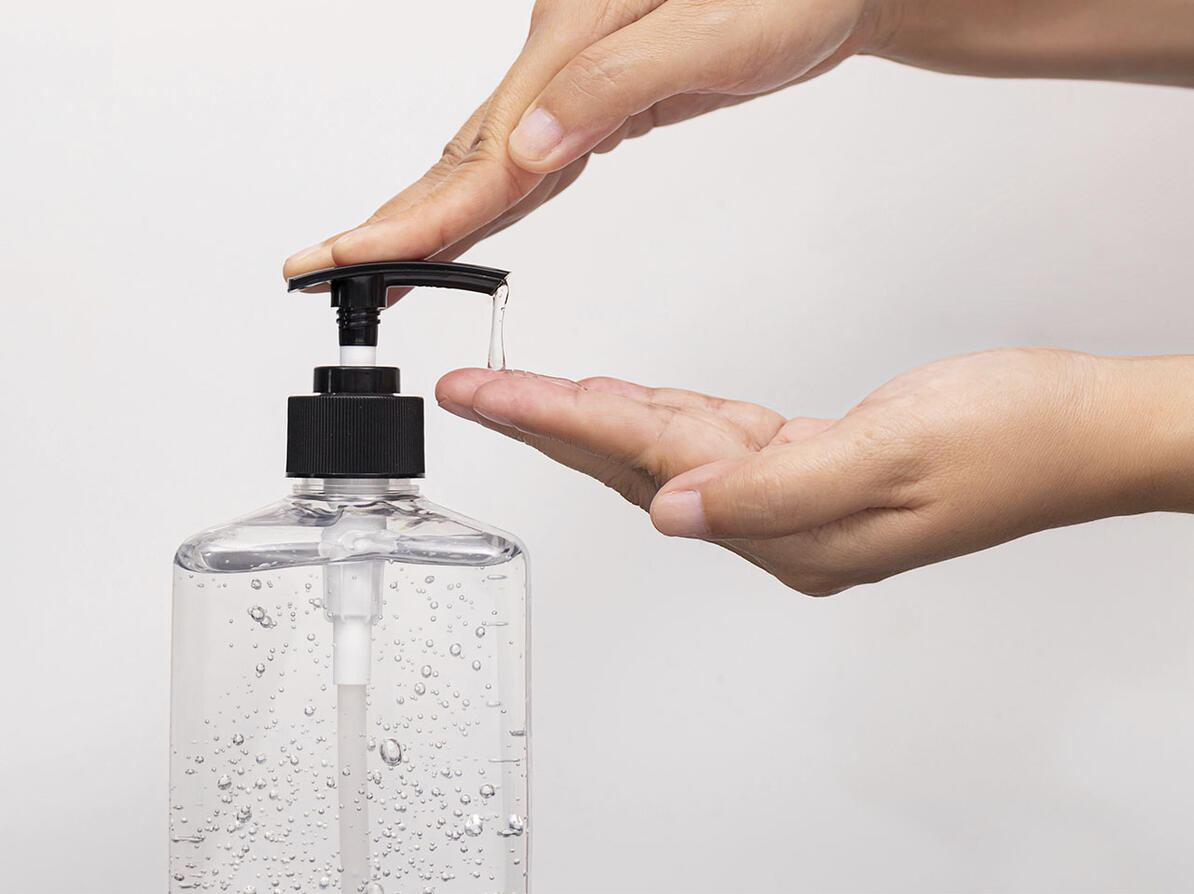Test of chemicals in liquid hand soap
Hand soap may contain substances which are allergenic or suspected to be endocrine disrupting. However, the market also offers plenty of good options without problematic chemicals.

Test: Many hand soaps are without unwanted ingredients
There are plenty of liquid hand soaps without problematic chemicals on the Danish Market. That is one of the conclusions in a test from The Danish Consumer Council THINK Chemicals.
One in four of the tested hand soaps are without problematic substances and perfume.
Suspected endocrine disruptors in 9 tested soaps
9 out of 79 tested soaps in the test contained substances, which are suspected to be endocrine disrupting. This means that the substances may contribute to an influence on the hormonal balances in the body. 4 soaps contain allergenic preservatives.
Your hand soap does not constitute a health risk in itself. But it can contribute to your total exposure to unwanted substances that may be allergenic or endocrine disrupting.
The total amount of problematic chemicals that you encounter in your everyday life may have negative effects on your health. Scientists refer to this as “the cocktail effect”.
Ecolabels and allergy labels help you
Your skin is in contact with hand soap several times every day. Even though you rinse the soap off shortly after putting it on, The Danish Consumer Council THINK Chemicals recommends minimizing your exposure to unwanted chemicals and perfume in hand soaps.
Perfume is allergenic. Consequently it is a good idea to consider how much perfume you are exposed to in your products. To mitigate risk of allergy The Danish Consumer Council THINK Chemicals recommends that children do not use personal care products with perfume.
On the Danish market the Nordic ecolabel The Swan” and allergy labels such as “The Blue Label” and “AllergyCertified” can help you if you want to avoid allergenic or suspected endocrine disrupting substances.
About the test
-
The Danish Consumer Council THINK Chemicals has examined the ingredients in 79 liquid hand soaps on the Danish market. The hand soaps are examined for content of problematic ingredients, which for example are allergenic or suspected to be endocrine disrupting. The soaps are bought in Danish retail, including online shops in May and June 2019.
The test is a survey on ingredients. This means that the test team has examined the ingredient lists on the soaps and checked whether the content is present on a number of official lists of problematic chemicals.
How we conduct tests in The Danish Consumer Council THINK Chemicals
What we found
The tested hand soaps receive the following assessment.
- 22 hand soaps receive the best assessment (A). These are without known problematic chemicals.
- 45 hand soaps receive an average assessment (B). All of these soaps contain perfume.
- 12 hand soaps receive the lowest assessment (C). These contain suspected endocrine disrupting substances or allergenic preservatives.
Among the hand soaps with the lowest assessment the test revealed content of the following problematic substances. Most of these are international brands.
- Methylisothiazolinone / Methylchlorisothiazolinone – allergenic preservatives. The substances were found in 4 hand soap from; Creighton, Aesop, Dettol, Origins.
- Butylphenyl methylpropional - suspected endocrine disrupting and allergenic fragrance. The substance was found in 4 hand soaps fromDove, Natura Siberica, Cussons, Rituals.
- Salicylic acid – suspected to be endocrine disrupting and to harm reproduction. The substance was found in 3 hand soaps, from Dettol and two national Danish brands.
- Benzophenone-3 – a UV-filter which is suspected to be endocrine disrupting. The substance was found in 1 hand soap from The Body shop
- Ethylhexyl methoxycinnamate – a UV-filter which is suspected to be endocrine disrupting. The substance was found in 1 hand soap from & Other Stories
- BHT – suspected to be endocrine disrupting. The substance was found in 1 hand soap from & Other Stories
-
In 2015 The Danish Consumer Council THINK Chemicals conducted a similar test of hand soaps.
The results at the time showed a larger share of hand soaps with unwanted substances.
25 of 76 received the lowest assessment due to allergenic preservatives or the problematic substance triclosan which later has been banned in hand soaps.
In 2015 none of the tested hand soaps contained problematic UV-filters, which in this test were found in 2 hand soaps. UV-filters ought not to be necessary in hand soaps.
